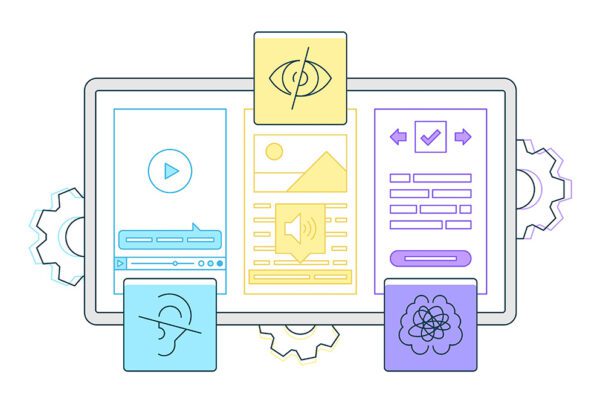Knowing how to get more website conversions for small businesses has become a critical web design skill. Across industries, business websites have an average conversion rate of 2.35%, with a handful of peak performers topping out at around 11%. As hard as it is to get visitors to your business page in the first place, you must ensure that your website provides an intuitive, seamless user experience to maximize conversions.
How to Increase Website Conversion Rates with Website Design
Here are seven ways you can tailor your website’s user experience to drive conversions.
1. Design for User-Friendly Navigation
An easily navigable website is crucial for driving conversions. Visitors should be able to find what they’re looking for with minimal effort. On average, new website visitors spend just 6.44 seconds reading the main navigation menu. If users can’t find the information or product they’re seeking, they’re likely to leave your site.
Keep your menu simple, organized, and intuitive. For larger sites, consider including a search bar. For small business pages — especially those that rely on form submissions — make sure forms are easily accessible from any page on your site. A well-structured, user-friendly website enhances the user experience and makes it easier for visitors to complete forms, leading to higher conversion rates.
2. Optimize for Mobile Users
Mobile and tablet optimization will significantly increase your conversion rates by providing a seamless user experience, regardless of the device used. Now that a majority of users — 54% — access business websites via mobile devices, it’s more important than ever that your site is mobile-friendly. A website that isn’t optimized for mobile frustrates users and causes bounce rates to spike. Make sure your site is responsive and formatted for mobile viewing, meaning it adjusts to fit the screen size of the user’s device. This includes positioning forms and buttons linked to conversions prominently on different viewing modes.

3. Include a Clear Call to Action (CTA)
Each page on your website should have a clear and compelling call to action (CTA). Effective CTAs may be specific purchase recommendations or form submissions for content like “Sign Up for Our Newsletter” or “Download Our Free Guide.” Make sure your CTAs are displayed noticeably, are easy to understand, and lead directly to the form you want users to fill out. Strong CTAs guide users toward the actions you want them to take, significantly increasing your conversion rates.
4. Deploy Trust Signals
In digital marketing, trust signals refer to page features such as customer testimonials, reviews, case studies, and trust badges like security seals or accreditations. Displaying trust signals increases your credibility and drives conversions. These signals reassure users that your business is legitimate and sufficiently trustworthy to handle private user data responsibly. In your website design, consider including testimonials from satisfied customers who have benefited from conversion actions or displaying the total number of positive reviews to date.
5. Speed Up Your Site
Slow website load times cause high bounce rates, with rates spiking 32% over an increase in page loading times from one to three seconds. Regularly check your website’s speed and optimize where necessary. Common page speed optimization techniques include compressing images, leveraging browser caching, or reducing the number of plugins. Additionally, keep your forms simple and quick to load. A speedy website improves user experience and makes it easier for visitors to complete conversion tasks.

6. Emphasize Visual Appeal
When visitors arrive at your landing page, 94% form their overall first impression based on aesthetics alone, and 88% won’t engage or return if they find the page visually unappealing.
A visually appealing website increases user engagement and drives conversions. Implementing aesthetic features like high-quality images, cohesive color schemes, and clean typography can make your site more inviting. Incorporate visual cues such as arrows or a contrasting color, to draw attention to specific information such as submission forms or contact details.
7. Maintain Simplicity in Design
Clean, simple website designs outperform cluttered and visually busy sites. Overly complicated sites with multiple attention-grabbing features can overwhelm users and make it difficult for them to find the information they want quickly. Use plenty of white space and avoid unnecessary clutter. Make conversion elements stand out by keeping the overall design simple.
Minimalism works well as a guiding principle for web design. The contemporary minimalist design relies on four basic features:
- White background: Creates strong contrast between backgrounds and key texts.
- Bold colors: Coordinates with white background for contrast and allows designers to communicate tone and emotion.
- Clean typography: Causes users to focus on text content.
- Whitespace: Helps users interpret what’s most important on a page.
Optimal design for your business’ website ultimately depends on your brand identity and core messaging goals. Nevertheless, implementing these seven tips along with your unique requirements will enhance your site’s user experience and help capture more conversions.
Start the Conversation
Interested in learning more about how to increase sales by properly leveraging your website?



